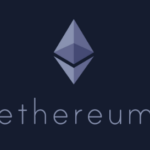Ethereum Layer 2 Solutions Drive Gas Fees to Lowest Levels in Four Years

Ethereum’s gas fees recently plummeted to single-digit levels due to decreased prices, but experts caution that this trend may not persist. Etherscan data revealed users paying as little as 1 gwei or $0.007 to transfer ETH on August 10, a figure unseen since 2020. However, costs swiftly escalated, doubling to 2 gwei the next day and reaching 6 gwei presently. Since the Berlin hard fork in May 2021, there have been fewer than 20 days when daily gas fees dropped below 10 gwei.
Alice Liu, CoinMarketCap’s research lead, noted that such occurrences typically coincide with Ethereum experiencing below-market price levels, indicating reduced network activity and market sentiments. Ethereum is currently trading around $2,700, approximately 45% lower than its peak of $4,850. Investors are questioning the factors hindering the asset, particularly following the SEC’s approval of a spot ETH ETF.
Liu emphasized the fluctuating nature of gas fees in the crypto realm, highlighting higher fees during U.S. business hours and lower fees during weekends or late nights when demand diminishes. She cautioned that extremely low gas fees like those observed recently are unlikely to endure. Matt Cutler, Blocknative’s CEO, concurred, citing Ethereum L1 gas fees’ historical volatility and advising against expecting prolonged 1 gwei fees.
Layer 2 scaling networks have played a pivotal role in Ethereum’s reduced gas fee environment, with analysts attributing the shift to increased activity on these platforms. L2Beat data indicates a significant surge in activity post the Dencun upgrade in March 2024, with total value locked (TVL) on L2s rising by 300% to $36 billion from $12 billion a year earlier, nearing a $50 billion peak in early June. Prominent L2 networks like Coinbase’s Layer 2 Base and Arbitrum have attracted substantial TVL, with other protocols such as Blast, Optimism, and Mantle also witnessing notable usage.
While some attribute the rise in Ethereum L1 transaction volume to the popularity of L2s, others suggest that price movements play a more significant role. Cutler noted that lower ETH prices correlate with reduced transaction volumes and subsequently lower gas prices.
Low gas fees raise concerns about an inflationary scenario for ETH holders, as decreased fees lead to fewer ETH burns, resulting in a growing token supply. Despite the current inflationary environment, historical trends suggest that such conditions are transient, with volatile gas prices impacting ETH supply. This situation may stabilize as transaction volumes increase.
Ultimately, the trajectory of Ethereum’s network supply and gas fees hinges on price movements, which have struggled to ascend despite expectations surrounding the ETH ETF catalyst.



